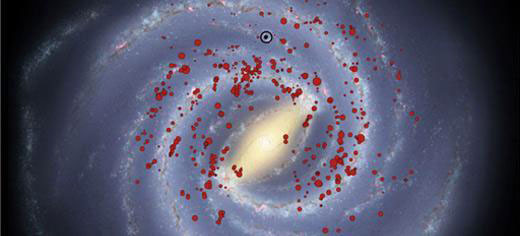 A 12-year study of massive stars has reaffirmed that our Galaxy has four spiral arms, following years of debate sparked by images taken by NASA's Spitzer Space Telescope that only showed two arms.
A 12-year study of massive stars has reaffirmed that our Galaxy has four spiral arms, following years of debate sparked by images taken by NASA's Spitzer Space Telescope that only showed two arms.
Dec 17th, 2013
Read more
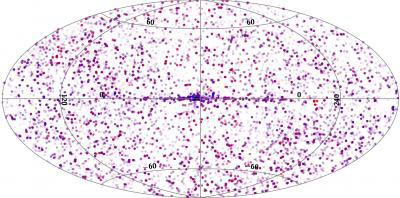 Astronomers from University of Leicester provide new insights into cosmic phenomena.
Astronomers from University of Leicester provide new insights into cosmic phenomena.
Dec 16th, 2013
Read more
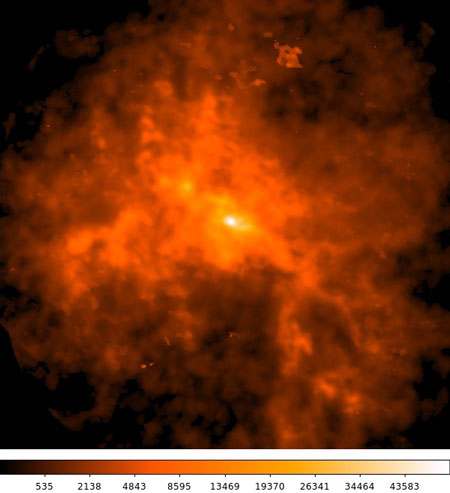 W49A might be one of the best-kept secrets in our galaxy. This star-forming region shines 100 times brighter than the Orion nebula, but is so obscured by dust that very little visible or infrared light escapes. The Smithsonian's Submillimeter Array has peered through the dusty fog to provide the first clear view of this stellar nursery.
W49A might be one of the best-kept secrets in our galaxy. This star-forming region shines 100 times brighter than the Orion nebula, but is so obscured by dust that very little visible or infrared light escapes. The Smithsonian's Submillimeter Array has peered through the dusty fog to provide the first clear view of this stellar nursery.
Dec 16th, 2013
Read more
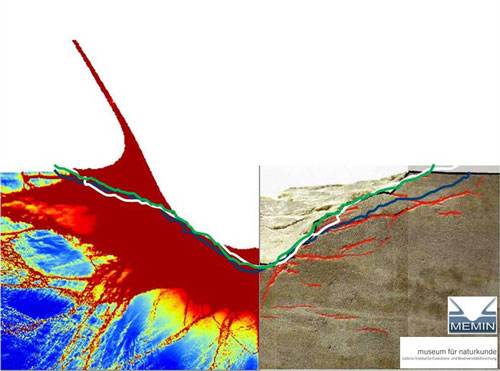 Scientists are currently trying to gain a better understanding of how craters are formed. Their work involves smashing miniature meteorites into rock under laboratory conditions - and then analyzing the craters using ultrasound tomography.
Scientists are currently trying to gain a better understanding of how craters are formed. Their work involves smashing miniature meteorites into rock under laboratory conditions - and then analyzing the craters using ultrasound tomography.
Dec 16th, 2013
Read more
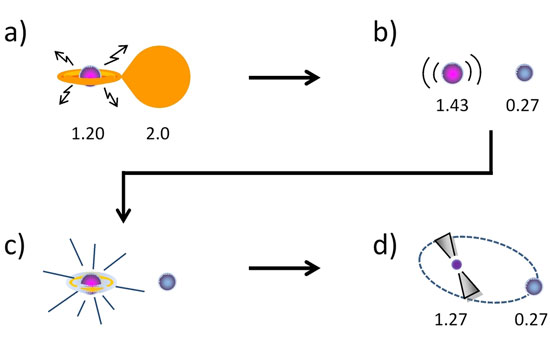 Two astronomers from Bonn have proposed a new path for the formation of a newly discovered class of millisecond pulsars with similar orbital periods and eccentricities. In the scenario of Paulo Freire and Thomas Tauris, a massive white dwarf star accretes matter and angular momentum from a normal companion star and grows beyond the critical Chandrasekhar mass limit. The new hypothesis makes several testable predictions about this recently discovered sub-class of millisecond pulsars.
Two astronomers from Bonn have proposed a new path for the formation of a newly discovered class of millisecond pulsars with similar orbital periods and eccentricities. In the scenario of Paulo Freire and Thomas Tauris, a massive white dwarf star accretes matter and angular momentum from a normal companion star and grows beyond the critical Chandrasekhar mass limit. The new hypothesis makes several testable predictions about this recently discovered sub-class of millisecond pulsars.
Dec 16th, 2013
Read more
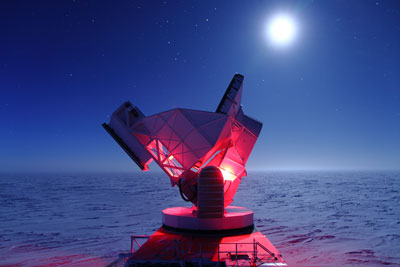 South Pole Telescope scientists have detected for the first time a subtle distortion in the oldest light in the universe, which may help reveal secrets about the earliest moments in the universe's formation.
South Pole Telescope scientists have detected for the first time a subtle distortion in the oldest light in the universe, which may help reveal secrets about the earliest moments in the universe's formation.
Dec 14th, 2013
Read more
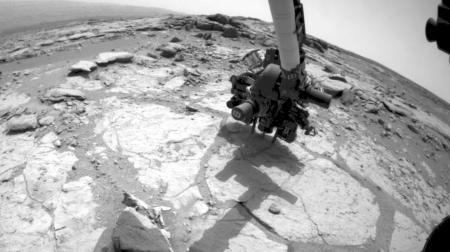 Although researchers have determined the ages of rocks from other planetary bodies, the actual experiments - like analyzing meteorites and moon rocks - have always been done on Earth. Now, for the first time, researchers at Caltech have successfully determined the age of a Martian rock - with experiments performed on Mars. This work could not only help in understanding the geologic history of Mars but also aid in the search for evidence of ancient life there.
Although researchers have determined the ages of rocks from other planetary bodies, the actual experiments - like analyzing meteorites and moon rocks - have always been done on Earth. Now, for the first time, researchers at Caltech have successfully determined the age of a Martian rock - with experiments performed on Mars. This work could not only help in understanding the geologic history of Mars but also aid in the search for evidence of ancient life there.
Dec 13th, 2013
Read more
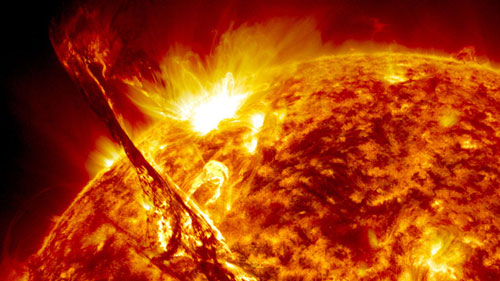 First discovered in 2007, 'fast radio bursts' continue to defy explanation. These cosmic chirps last for only a thousandth of a second. The characteristics of the radio pulses suggested that they came from galaxies billions of light-years away. However, new work points to a much closer origin - flaring stars within our own galaxy.
First discovered in 2007, 'fast radio bursts' continue to defy explanation. These cosmic chirps last for only a thousandth of a second. The characteristics of the radio pulses suggested that they came from galaxies billions of light-years away. However, new work points to a much closer origin - flaring stars within our own galaxy.
Dec 12th, 2013
Read more
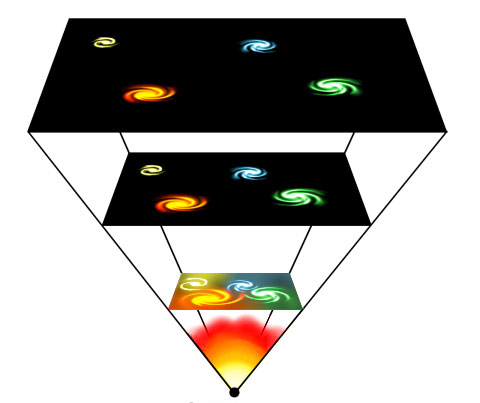 Maybe it happens tomorrow. Maybe in a billion years. Physicists have long predicted that the universe may one day collapse, and that everything in it will be compressed to a small hard ball. New calculations from physicists at the University of Southern Denmark now confirm this prediction - and they also conclude that the risk of a collapse is even greater than previously thought.
Maybe it happens tomorrow. Maybe in a billion years. Physicists have long predicted that the universe may one day collapse, and that everything in it will be compressed to a small hard ball. New calculations from physicists at the University of Southern Denmark now confirm this prediction - and they also conclude that the risk of a collapse is even greater than previously thought.
Dec 12th, 2013
Read more
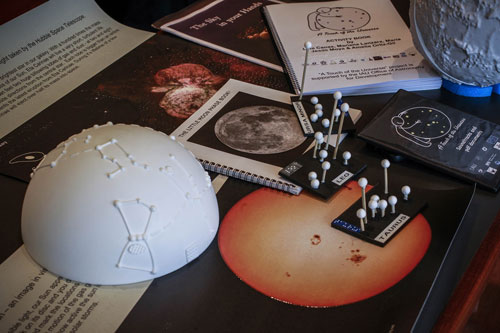 The Astronomic Observatory of the University of Valencia has undertaken this year the project 'A touch of the Universe', a non-profit mission that aims to create thirty kits with tactile astronomical activities for children with visual difficulties.
The Astronomic Observatory of the University of Valencia has undertaken this year the project 'A touch of the Universe', a non-profit mission that aims to create thirty kits with tactile astronomical activities for children with visual difficulties.
Dec 12th, 2013
Read more
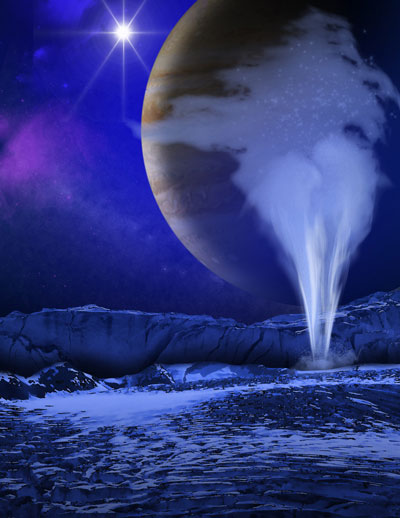 NASA's Hubble Space Telescope has observed water vapor above the frigid south polar region of Jupiter's moon Europa, providing the first strong evidence of water plumes erupting off the moon's surface.
NASA's Hubble Space Telescope has observed water vapor above the frigid south polar region of Jupiter's moon Europa, providing the first strong evidence of water plumes erupting off the moon's surface.
Dec 12th, 2013
Read more
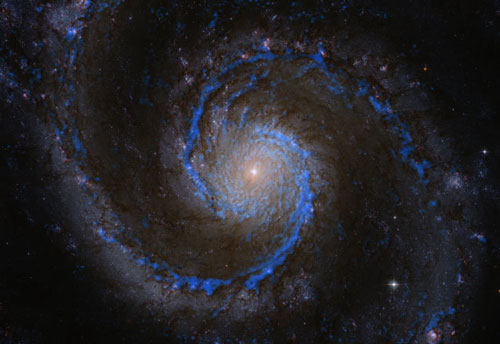 Molecular clouds in the whirlpool galaxy appear to be embedded in fog, whose pressure is crucial in determining the birth of suns.
Molecular clouds in the whirlpool galaxy appear to be embedded in fog, whose pressure is crucial in determining the birth of suns.
Dec 11th, 2013
Read more
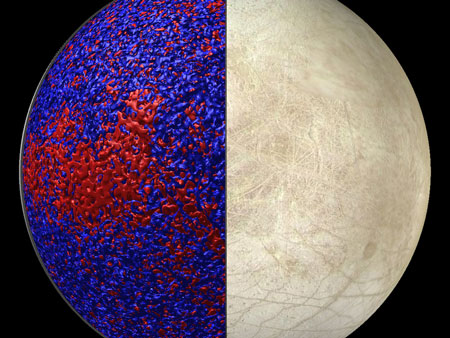 Researchers model currents beneath the frozen surface of Jupiter's moon.
Researchers model currents beneath the frozen surface of Jupiter's moon.
Dec 10th, 2013
Read more
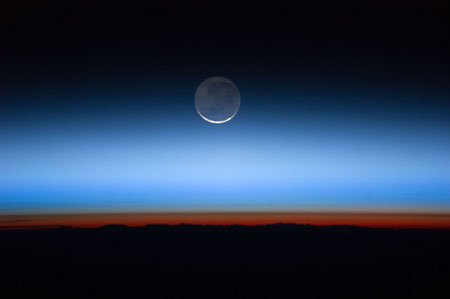 An atmospheric peculiarity the Earth shares with Jupiter, Saturn, Uranus and Neptune is likely common to billions of planets, University of Washington astronomers have found, and knowing that may help in the search for potentially habitable worlds.
An atmospheric peculiarity the Earth shares with Jupiter, Saturn, Uranus and Neptune is likely common to billions of planets, University of Washington astronomers have found, and knowing that may help in the search for potentially habitable worlds.
Dec 10th, 2013
Read more
Dust may be more rare than expected in galaxies of the early Universe, according to an international research team, led by Swinburne University of Technology astrophysicist Dr David Fisher.
Dec 10th, 2013
Read more
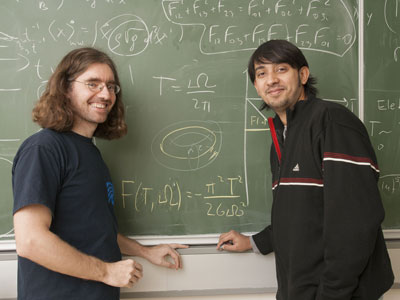 Apply heat and stir; an expanding universe can emerge in a remarkably simple way, say scientists.
Apply heat and stir; an expanding universe can emerge in a remarkably simple way, say scientists.
Dec 10th, 2013
Read more
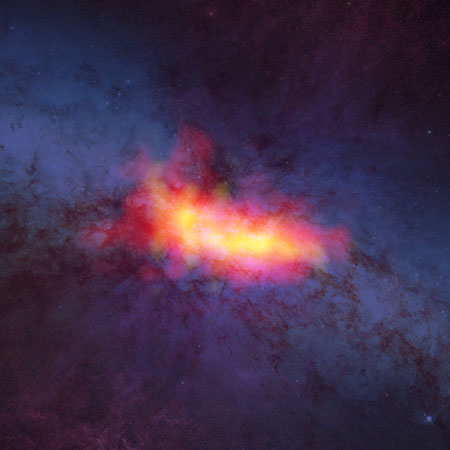 Using the new, high-frequency capabilities of the National Science Foundation's Robert C. Byrd Green Bank Telescope, astronomers have captured never-before-seen details of the nearby starburst galaxy M82. These new data highlight streamers of material fleeing the disk of the galaxy as well as concentrations of dense molecular gas surrounding pockets of intense star formation.
Using the new, high-frequency capabilities of the National Science Foundation's Robert C. Byrd Green Bank Telescope, astronomers have captured never-before-seen details of the nearby starburst galaxy M82. These new data highlight streamers of material fleeing the disk of the galaxy as well as concentrations of dense molecular gas surrounding pockets of intense star formation.
Dec 9th, 2013
Read more
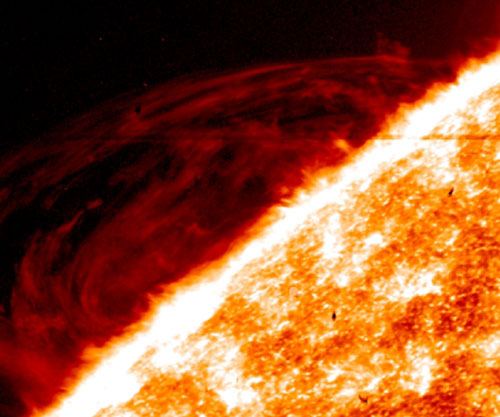 The region located between the surface of the sun and its atmosphere has been revealed as a more violent place than previously understood, according to images and data from NASA's newest solar observatory, the Interface Region Imaging Spectrograph, or IRIS.
The region located between the surface of the sun and its atmosphere has been revealed as a more violent place than previously understood, according to images and data from NASA's newest solar observatory, the Interface Region Imaging Spectrograph, or IRIS.
Dec 9th, 2013
Read more
 A 12-year study of massive stars has reaffirmed that our Galaxy has four spiral arms, following years of debate sparked by images taken by NASA's Spitzer Space Telescope that only showed two arms.
A 12-year study of massive stars has reaffirmed that our Galaxy has four spiral arms, following years of debate sparked by images taken by NASA's Spitzer Space Telescope that only showed two arms.
 Subscribe to our Space Exploration News feed
Subscribe to our Space Exploration News feed














